Istanbul Earthquake Risk explained: The most risky areas
Are you concerned about the earthquake risk in Istanbul? In this article, I’ll show you which areas have the highest earthquake risk in Istanbul and which factors really matter when searching for a property.
All information in this article and more is also included in my YouTube video:
Overview Earthquake Risk in Istanbul
Istanbul has a high earthquake risk. I’ll share the results of a study which shows the areas in Istanbul most at risk. This article is structured into six sections:
- Earthquake Risk in Türkiye
- Earthquake Risk in Istanbul
- Study on possible damages Istanbul
- Focus: Study results on very heavily damaged buildings in Istanbul
- Focus: Study results on heavily damaged buildings in Istanbul
- Important factors when buying property in Istanbul
1) Earthquake Risk in Türkiye
Let’s begin with the earthquake risk in Türkiye overall. Türkiye is an earthquake prone country. On the map below, the black lines mark the fault lines.
There are two major ones: The North Anatolian fault line and the East Anatolian one.
It was along the East Anatolian fault line, that the devastating double earthquakes with magnitudes of 7.8 and 7.7 struck in 2023.
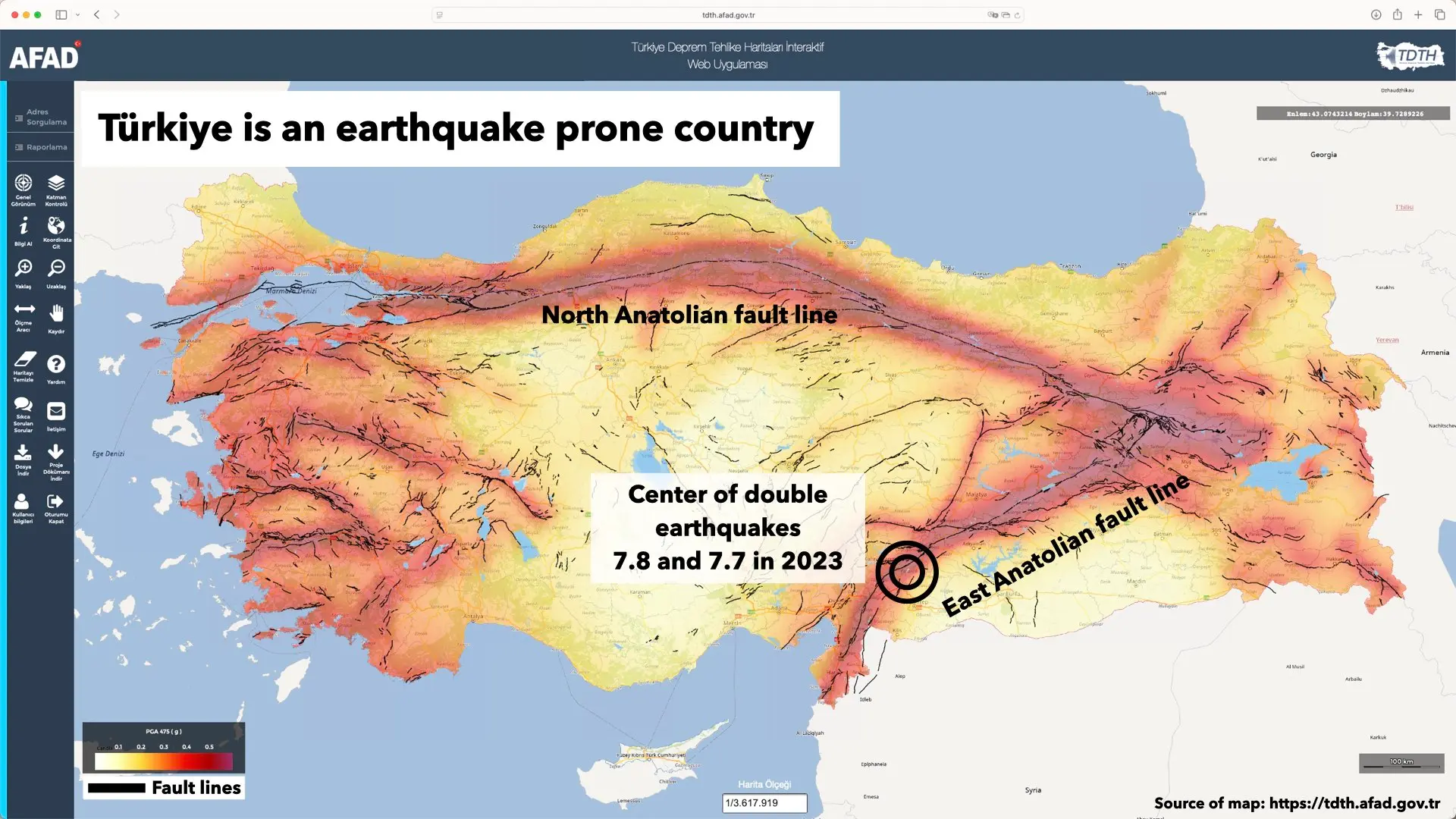
2) Earthquake Risk in Istanbul
Now let us zoom in on Istanbul and the Marmara region. The North Anatolian fault line runs just south of Istanbul.
The districts on the European south side are closest to the fault line. They are roughly 10 to 15 kilometers away.
In 1999, the major Marmara earthquake with a magnitude of 6.9 struck. More recently, in April 2025, an earthquake of magnitude 6.2 occurred in the Marmara Sea.
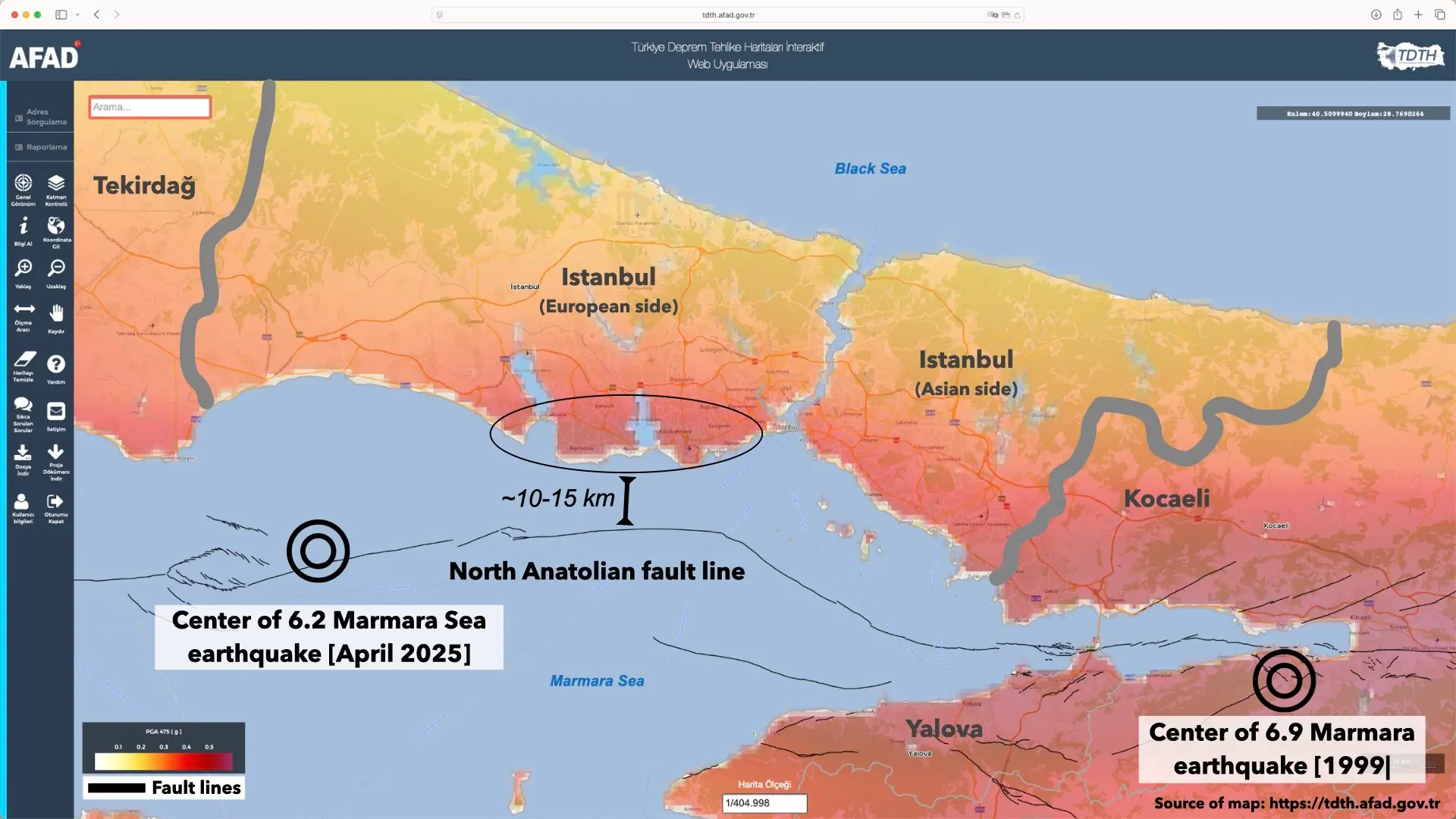
3) Study on possible damages Istanbul
So what would be possible damages if a major earthquake struck Istanbul? According to a comprehensive study published by the Kandilli Institute and the municipality of Istanbul in 2019, a scenario earthquake of magnitude 7.5 was simulated. The researchers used detailed input data about the entire building stock of Istanbul, the quality of the ground and many other parameters.
The simulation results are quite revealing:
- Buildings without damage: 57%
- Buildings with small damages: 26%
- Buildings with medium damages: 13%
- Buildings with heavy damages: 3%
- Buildings with very heavy damages: 1%
You can download the study here.
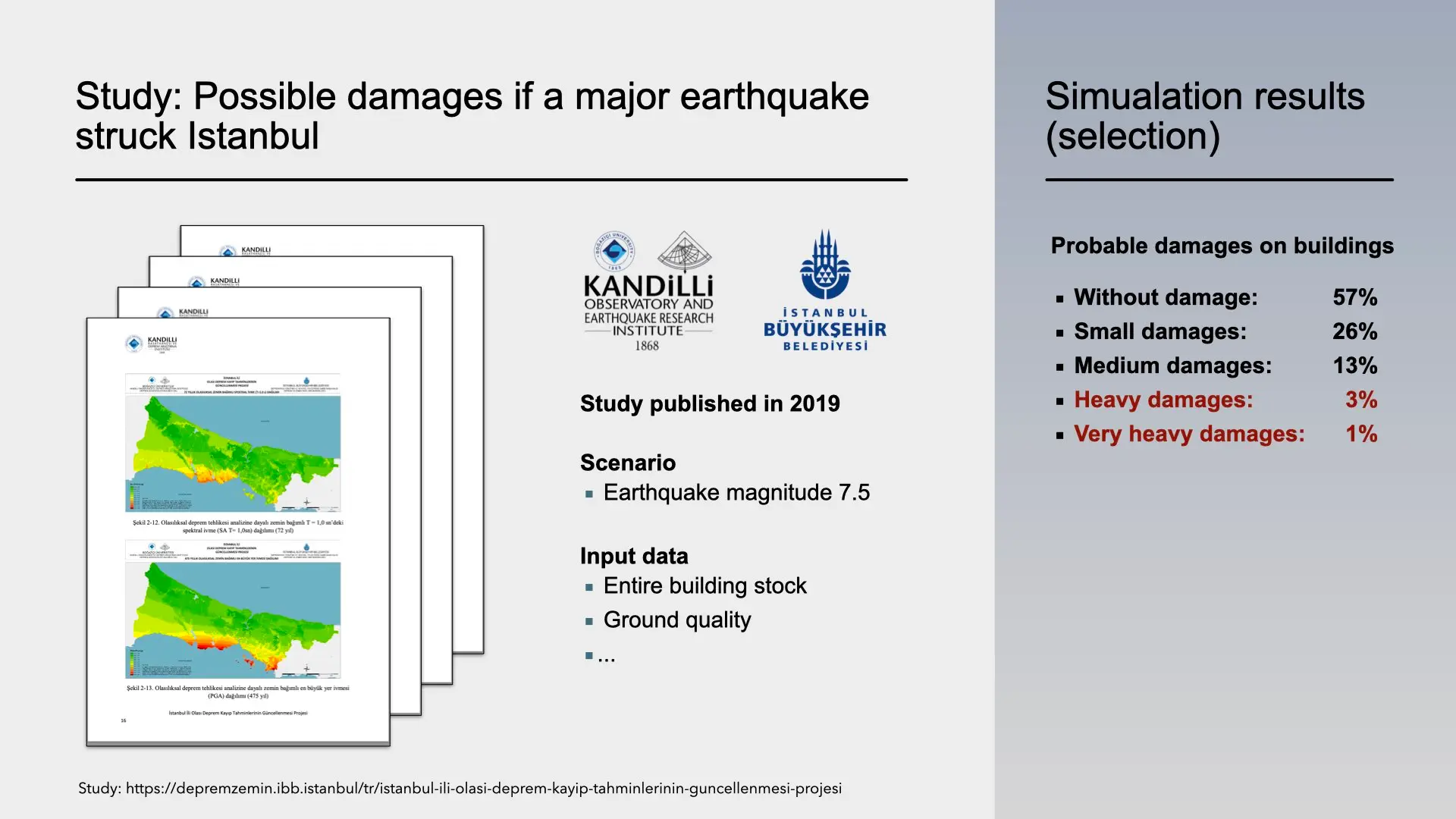
4) Focus: Study results on VERY HEAVILY damaged buildings in Istanbul
Let’s have a closer look at the very heavily damaged buildings. This heat map shows the highest concentration would be in the southeast of the European side of Istanbul.
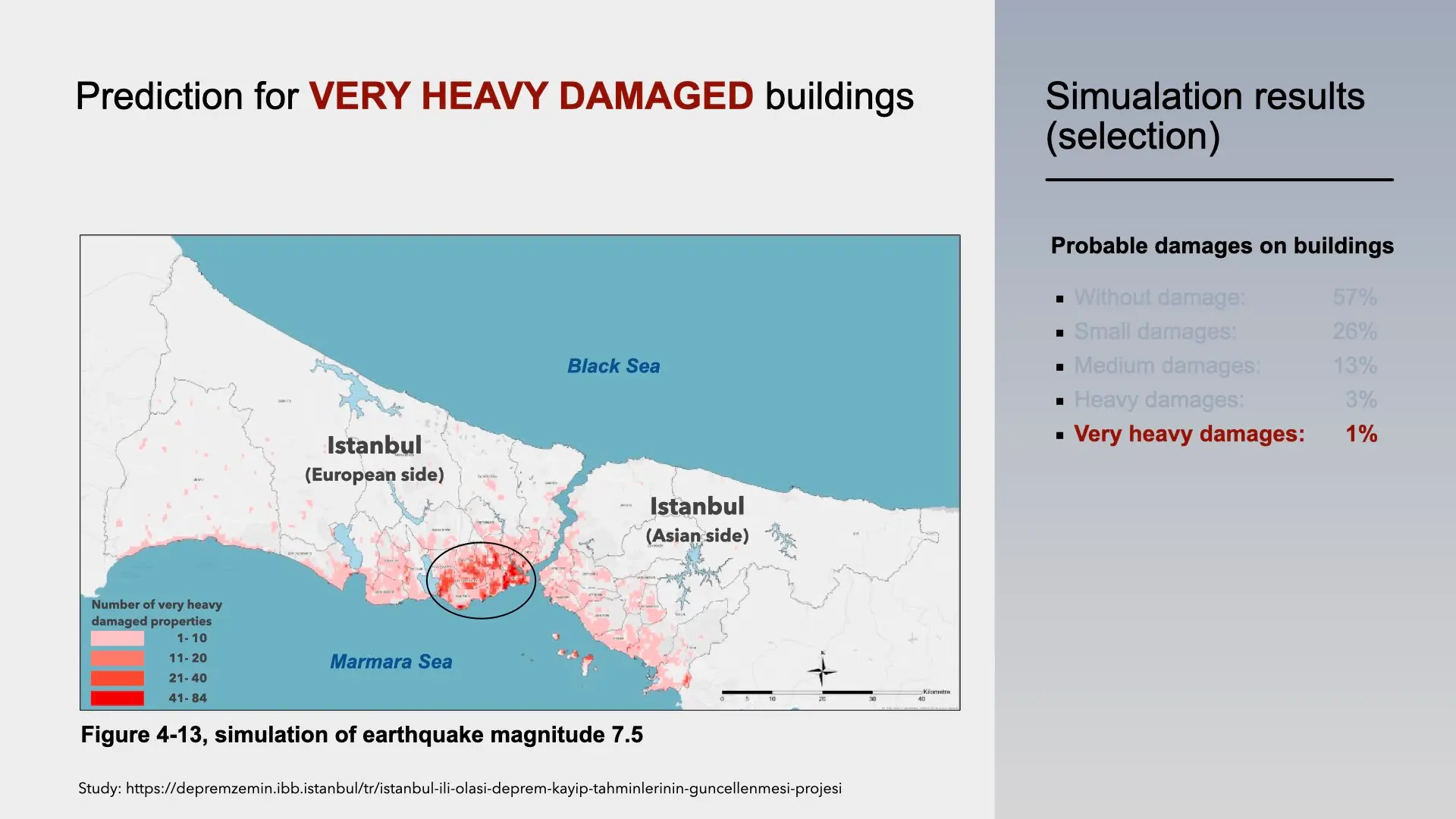
5) Focus: Study results on HEAVILY damaged buildings in Istanbul
For heavily damaged buildings, the high-risk zone is much wider and stretches across most of the southern districts on the European side.
In addition, there are high-risk pockets throughout the city.
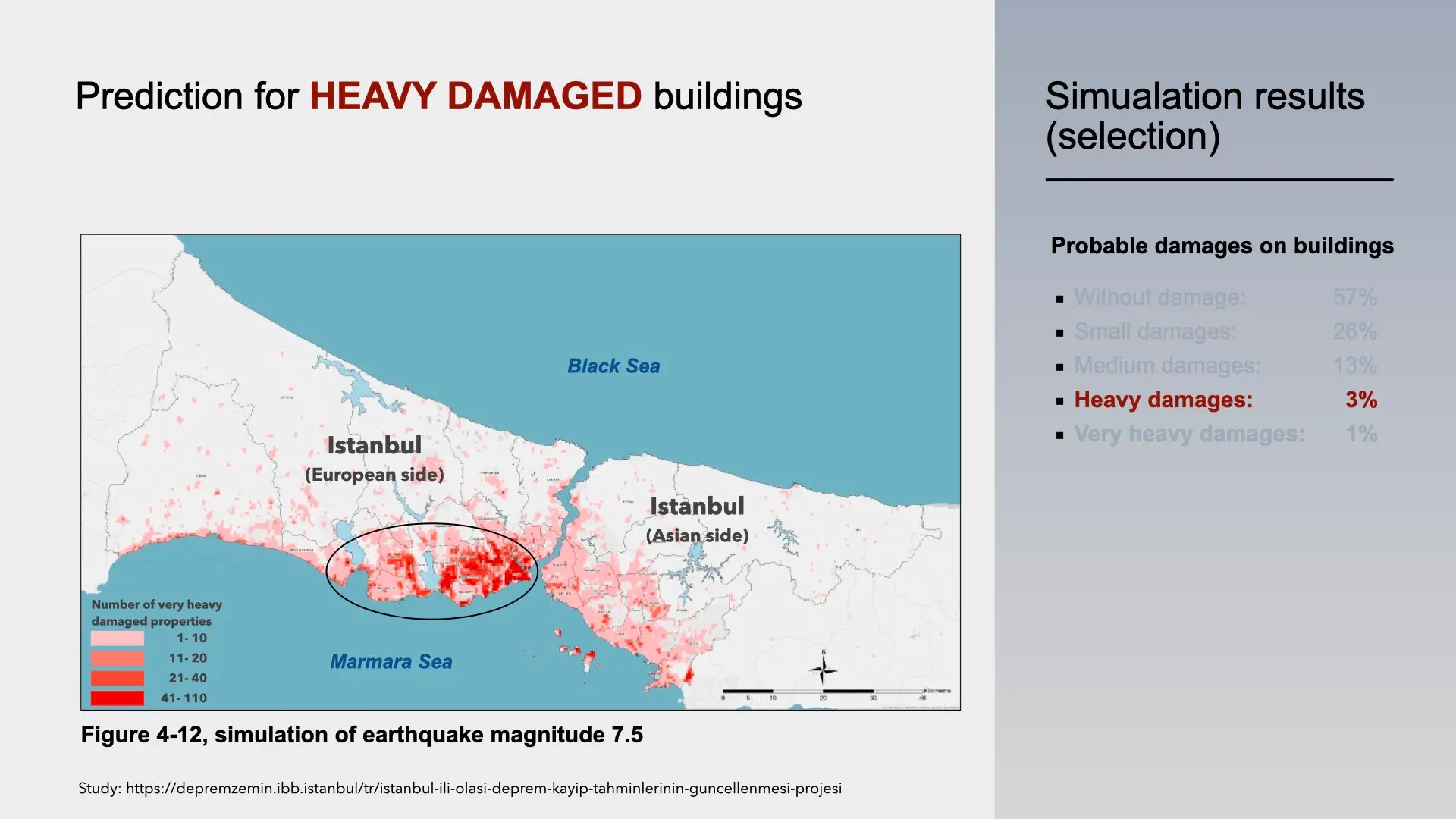
6) Important factors when buying property in Istanbul
So what does this mean if you want to buy or rent property in Istanbul? There are four important factors to consider.
- The first factor is distance to the fault lines. The closer a neighborhood to the North Anatolian fault line, the higher the earthquake risk. The districts on the European south side are particularly exposed.
- The second factor is ground strength. Even if a property is located near the fault line, stronger soil can absorb part of the earthquake’s energy and reduce potential damage.
- Thirdly, it is the resilience of the building itself. After the earthquake in southeast Turkey in 2023, we saw that 98% of collapsed buildings were older than 25 years. A newer and well-constructed building can make a huge difference.
- The fourth factor are individual measures. For example, this is our bed (check my YouTube video above) in Istanbul. It is marketed as an earthquake-proof bed. It is extremely heavy and weighs 500 kilograms, which makes it impossible to move. The roof structure is designed to hold parts from above. At the very least, it gives us peace of mind when going to bed at night.
Do you want to learn Where and How to buy the Best Property in Istanbul?
Informative, reliable and straight-to-the point. Join my Istanbul Property Insights newsletter by clicking on this link.
You can explore other articles about Istanbul by clicking on one of the following categories: